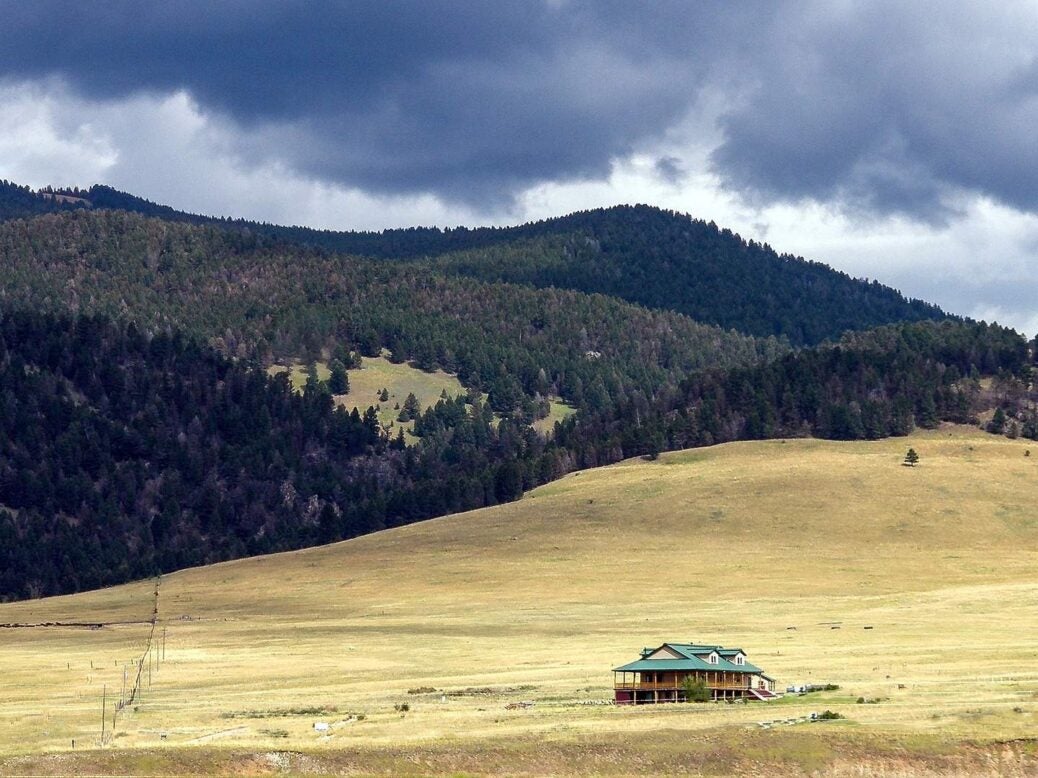
The American country house was built to enjoy – not to last, writes Clive Aslet
They do have country houses in the United States. Well, that’s one point of difference between Britain and its closest ally that we can put to bed.
By country houses, I don’t mean the overblown cuckoos-in-the-seaside-nest found in Gilded Age resorts like Newport, Rhode Island, and Bar Harbor, Maine: dwellings that are as showy, if not quite as large, as Versailles on a plot of the size found in Virginia Water. But proper country places, with their own mini-estates, horses, even farms.
When I was researching a book called The American Country House in the late 1980s, some well educated American friends refused to believe that such a phenomenon existed, or had ever existed. It would have been quite simply un-American. By which they meant that, in the Land of the Free, not even a Robber Baron would have so flagrantly aped Eu-rope, adopting a way of life that was showy, idle and anti-democratic. History proves those deniers of the country house tradition in the United States wrong.
Extravagant homes were one of the excesses identified as Conspicuous Consumption by the economist Thorstein Veblen in his Theory of the Leisure Class (1899). Plutocrats – as they were coming to be called – cast their eyes across the Atlantic to see what lifestyle tips they could pick up, before, sometimes, sending their daughters across too, to marry into Debrett’s or the Almanach de Gotha.
You bet they wanted the best the world had to offer, including country houses. I was reminded of this on a recent trip to New York. An architect friend drove me around Long Island to see some of his recent works. We passed through the graveyards of some of the country houses I had studied. For the thing about the American country house was that it was different, in important ways, from the European precedents.
For a start, they were not intended as dynastic seats. Striving Americans aren’t sentimental about places to the extent that we in Britain tend to be. Look at the struggles that some of today’s country house owners go through not to drop the spluttering torch that previous generations have handed them: they don’t want to be the ones who sell up and leave the ancestral pile.
This is not a feeling unique to the upper classes: heroines in Victorian novels are always sentimental about the scenes of childhood.
Moving targets
In the expanding United States, fortunes were to be made by relocating to new areas: business-savvy individuals were urged to forget their origins and move on. As a result, hundreds of country houses were abandoned or demolished when they had served their purpose. No regrets. The Depression did for them. Fashion moved on. The American country house was built to enjoy, not to last.
Hence the oblivion into which its memory had been cast when I was writing my book. Since the 1980s, the building type has been rehabilitated. My architect friend now has a big practice crafting fabulous country dwell-ings on an epic scale. One doesn’t look to American billionaires for Greta Thunberg-ish anxiety about consuming more than their fair share of the earth’s resources.
Their country houses, like those of the early 20th century, are pleasure domes, surrounded by their own golf courses, stables, pool houses, docks for the yacht and gate lodges, and equipped with home cinemas, spa complexes and (an essential ingredient) fabulously opulent bars. British homeowners find it hard to throw out furniture that they have had for a long time. Here, no such soppiness prevails.
The decorator rules. The results left me reeling. So much art, so much glossy fabric, so much colour, so much coordinated taste – so much of everything. Domestic perfection requires stamina to create, maintain and live up to. I crept home to Pimlico and caught up on my sleep.







